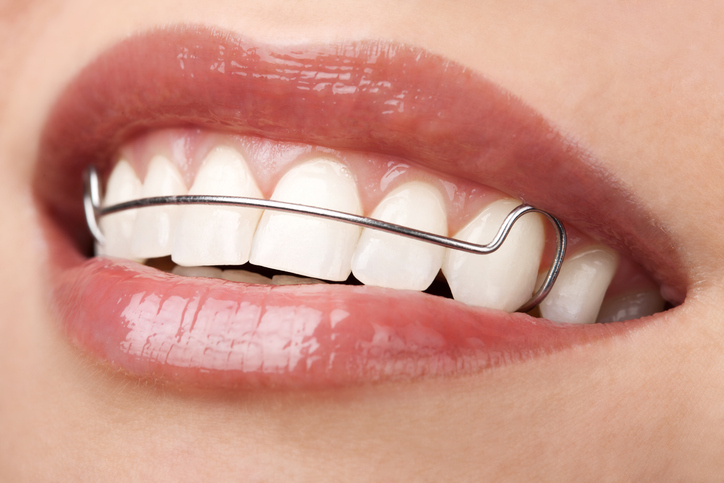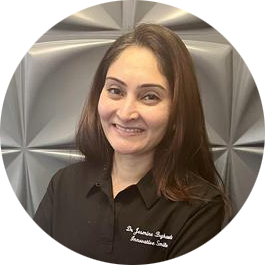Often, dentists suggest wearing personalized retainers after orthodontic treatment. In this article, we discuss the importance of wearing a retainer after having braces.
Importance of Wearing Retainer After Having Braces
As the name suggests, a retainer helps retain the desired position of the teeth after the braces are removed. Retainers are custom-made for each patient according to their specific mouth shape.
When you achieve the desired results with the orthodontic treatment and the teeth are in the proper position, the braces are removed. However, that does not mean that the teeth are permanently secure in their new position. Teeth are attached to flexible ligaments, called periodontal ligaments, that allow teeth to shift with the force of braces. Unfortunately, their flexibility also allows the teeth to shift back after receiving treatment. Teeth will also shift after braces due to the pressure of the bite force when chewing and because of overcrowding of teeth in the mouth.
Shifting teeth can cause misalignment of the upper and lower jaw, called malocclusion, and lead to issues such as jaw joint, neck, and back pain, headaches, and premature tooth wear.
In short, there are many reasons your teeth can lose their orderly appearance. If you neglect to wear your retainer, you will lose the results of your expensive and lengthy orthodontic treatment and may face additional health concerns.
For How Long Should I Wear Retainer After Braces?
In most cases, a retainer should be worn constantly for six to nine months after the braces are removed. However, the time may differ depending on each individual case. During this time, you should remove the retainer only when eating and brushing your teeth. After this time, you may start wearing your retainer only at night and gradually reduce the number of nights a week you wear it to four or five nights weekly.
Remember that only your orthodontic dentist can determine the exact amount of time you need to wear your retainer. We recommend strictly adhering to the schedule your doctor establishes for you.
Types of Retainers
Retainers can be removable or fixed and stay in the mouth. In some cases, it may be recommended that you wear both types of retainers at the same time.
Fixed Retainers
Fixed retainers can also be called permanent retainers. They are affixed to be teeth with a special dental bonding material that resembles glue and can only be removed by your dentist. They are attachable to either the front or the back of your teeth. The advantage of such retainers is that you cannot forget to wear them. If it is in the mouth for at least 22 hours a day, your retainer will provide reliable results.
Removable Retainers
Removable retainers typically look like wires attached to an acrylic base that rests on the gums on the inner side of the teeth. Another type of retainer is made of clear plastic and does not have a metal rod. These types of retainers should be removed when eating and brushing your teeth. However, they still should be worn at all other times, so make sure that you have enough discipline to do so to achieve optimal results.
How to Take Care of Your Retainer?
Two requirements for taking proper care of your retainer are to protect it from physical damage and to keep it clean. Cleaning your retainer twice a day is crucial as it ensures not only that your retainer lasts longer but also that you have good oral health and avoid harmful bacterial growth in the mouth. Follow these rules when taking care of your retainer:
- If your retainer is removable, always take it out when eating to avoid cracking or breaking it when chewing.
- Store your retainer in its case when you are not wearing it.
- Do not leave your retainer in the sun or hot places, such as a car, to prevent the plastic from heating up and deforming.
- Make sure that your removable retainer is clean before putting it back in the mouth.
- Clean your retainer with antibacterial soap or a special solution, but avoid abrasive toothpaste, which can damage the retainer’s surface. Ask your dentist for advice on how to clean your unique retainer properly.
- Always brush and floss your teeth thoroughly in the morning and at night before putting your retainer back in your mouth. This way, you will prevent bacteria from accumulating under the retainer and avoid cavities and bad breath.
- Rinse your mouth after meals before putting your retainer back in the mouth.
- If your retainer is not removable, use the same brushing and flossing techniques as you do when wearing braces.
Make an Appointment Today
Do not hesitate to make an appointment with an orthodontic office in Long Beach to get high-quality and reliable treatment. Our specialists will conduct a comprehensive analysis of your case and offer you an effective teeth straightening plan. We look forward to your visit to iSmiles LB.


